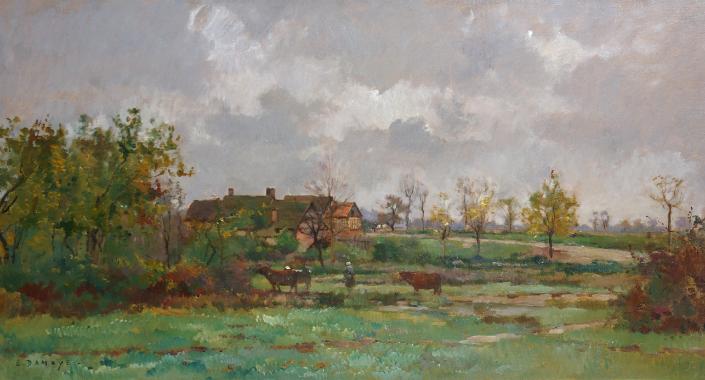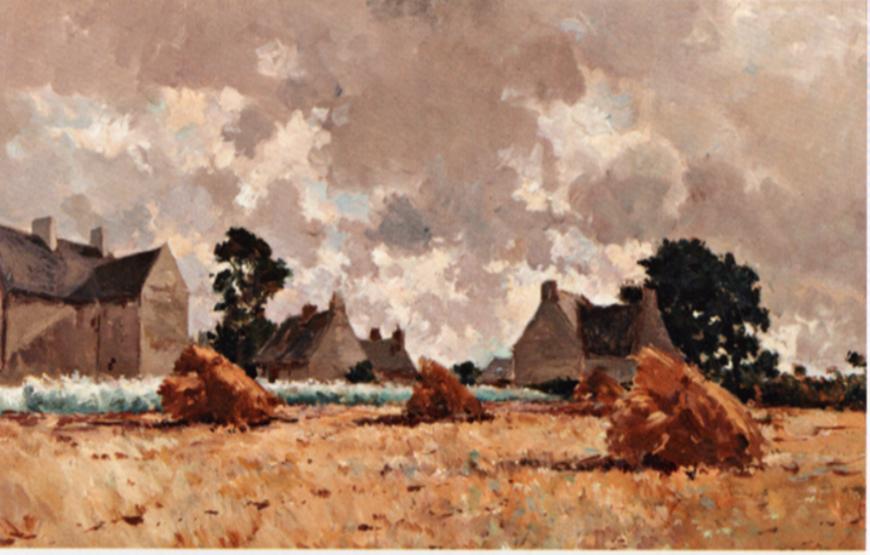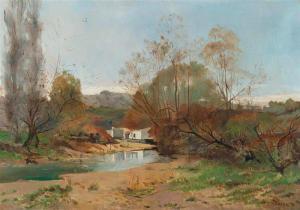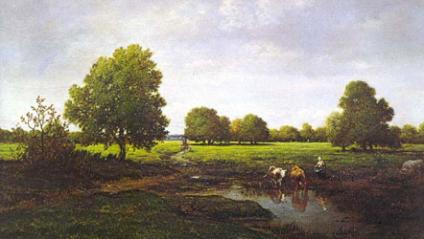<Back to Index>
- Painter Narcisse Virgilio Díaz de la Peña, 1807
- Painter Pierre Emmanuel Damoye, 1847
PAGE SPONSOR
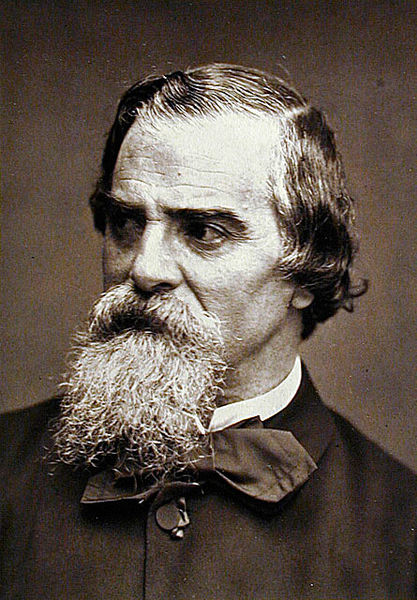
Narcisse Virgilio Díaz de la Peña (25 August 1807 – 18 November 1876) was a French painter of the Barbizon school.
Diaz was born in Bordeaux to Spanish parents. At the age of ten, Diaz became an orphan, and misfortune dogged his early years. His foot was bitten by a reptile in Meudon wood, near Sèvres, where he had been taken to live with some friends of his mother. The bite was poorly dressed, and ultimately he lost his leg. However, as it turned out, the wooden stump that replaced his leg became famous.
At fifteen he entered the studios at Sèvres, first working in the decoration of porcelain occupied him and later turning to painting. Turkish and Oriental scenes attracted him, and he took to painting Eastern figures dressed in richly colored garments; many of these paintings remain extant. He also spent much time at Barbizon.
Around 1831 Díaz encountered Théodore Rousseau, for whom he possessed a great veneration, despite the fact that Rousseau was four years his junior. At Fontainebleau Díaz found Rousseau painting his wonderful forest pictures, and was determined to paint in the same way if possible. However, Rousseau was then in poor health, embittered against the world, and consequently was difficult to approach. On one occasion, Diaz followed him surreptitiously to the forest, wooden leg not hindering, and he dodged round after the painter, trying to observe his method of work. After a time Díaz found a way to become friendly with Rousseau, and revealed his eagerness to understand the latter's techniques. Rousseau was touched with the passionate words of admiration, and finally taught Diaz all he knew.
Díaz exhibited many pictures at the Paris Salon, and was decorated in 1851. During the Franco - German War he went to Brussels. After 1871, his works became fashionable and rose gradually in the estimation of collectors, and he worked constantly and successfully. Díaz's finest pictures are his forest scenes and storms, and it is on these that his fame rests. There are several examples of his work in the Louvre, and three small figure pictures in the Wallace Collection, Hertford House. Perhaps the most notable of Diaz's works are "La Fée aux Perles" (1857, housed in the Louvre); "Sunset in the Forest" (1868); "The Storm" and "The Forest of Fontainebleau" (1870, housed at Leeds).
Diaz himself had no well known pupils, but François Visconti emulated his work to some degree and Léon Richet followed markedly his methods of tree painting. For a period, Jean - François Millet also painted small figures in avowed imitation of Diaz's then popular subjects. In 1876, while visiting his son's grave, he caught a cold. He went to Menton in an attempt to recover his health, but on November 18 of that year he died. In 1881, he posthumously received the Légion d’honneur.
Díaz's son, Eugène - Émile (1837 – 1901), achieved some fame as composer Eugène Diaz.
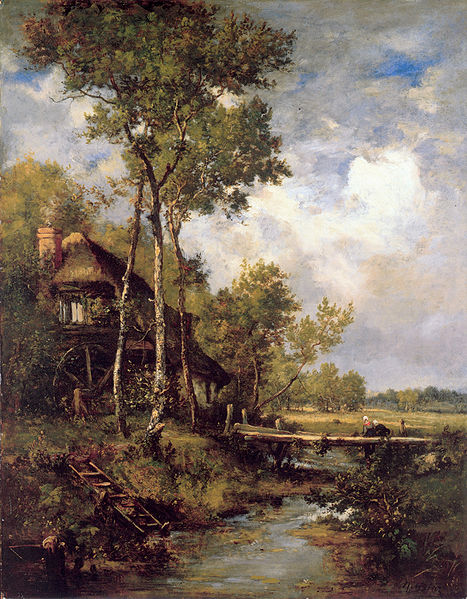
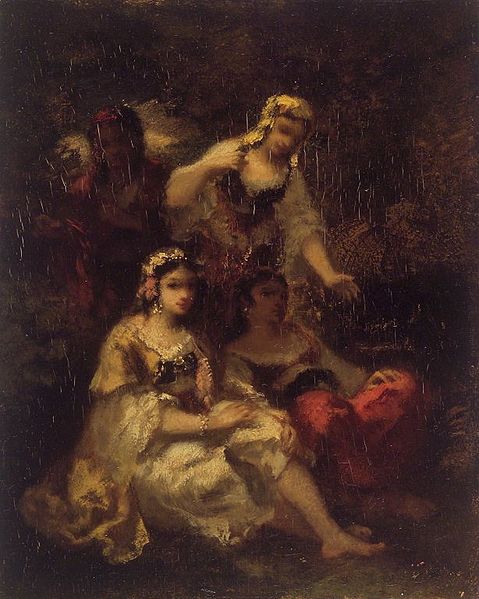
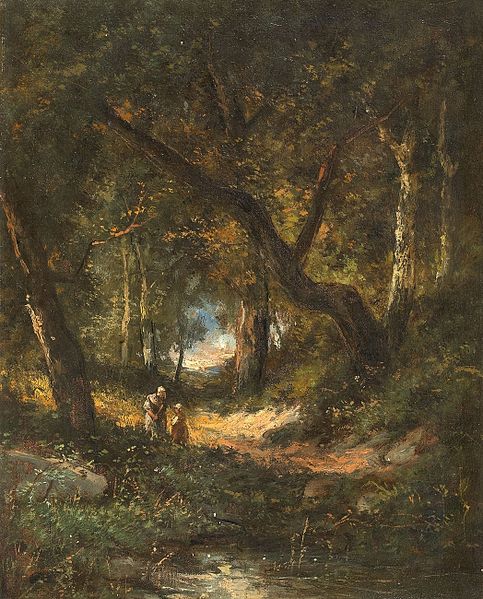
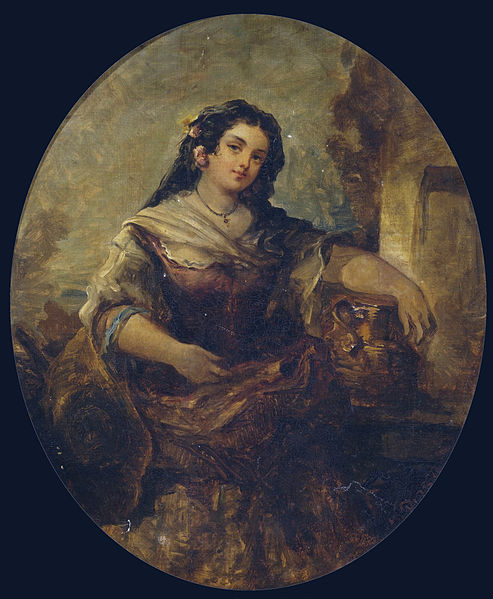
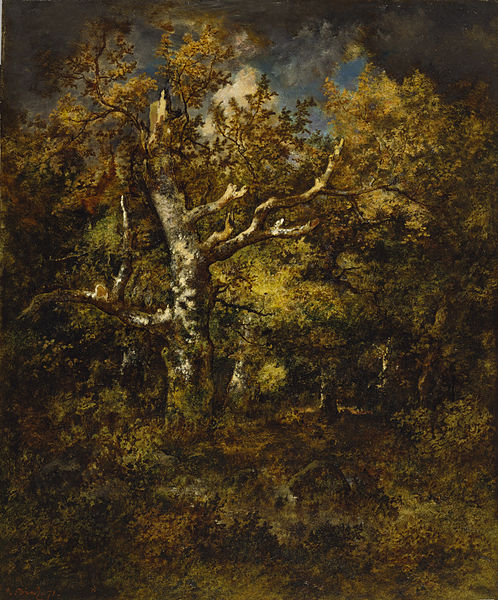
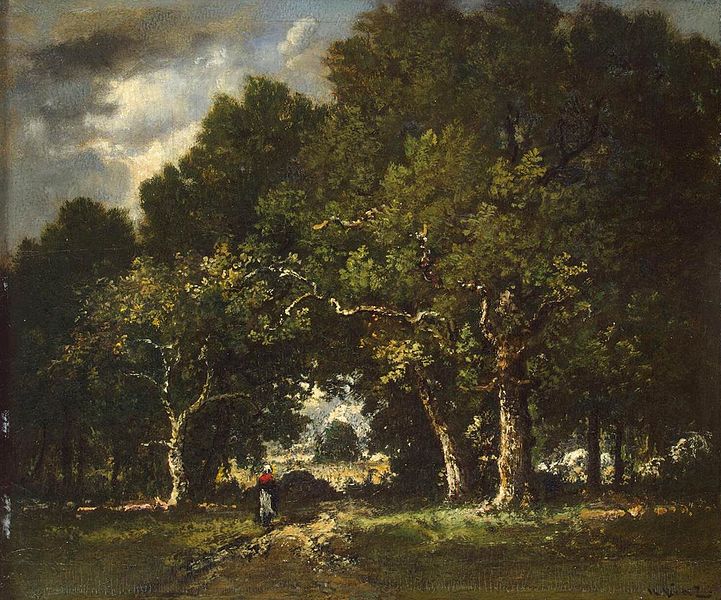
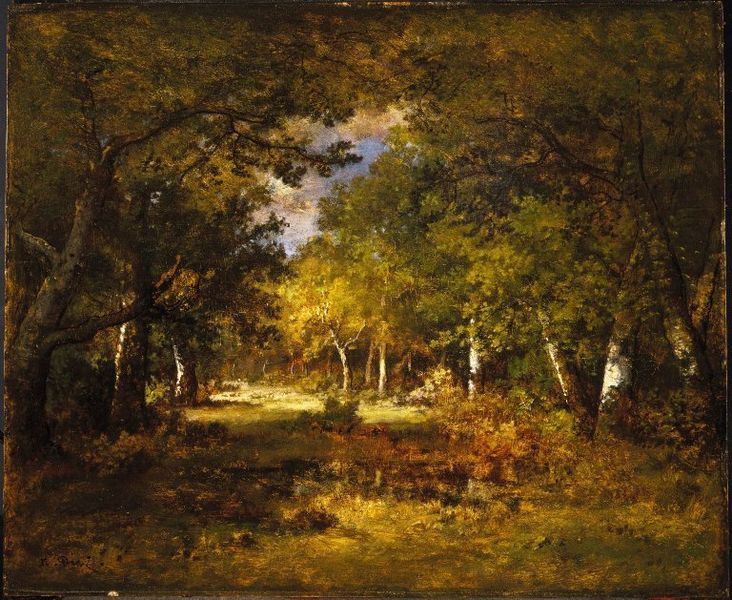
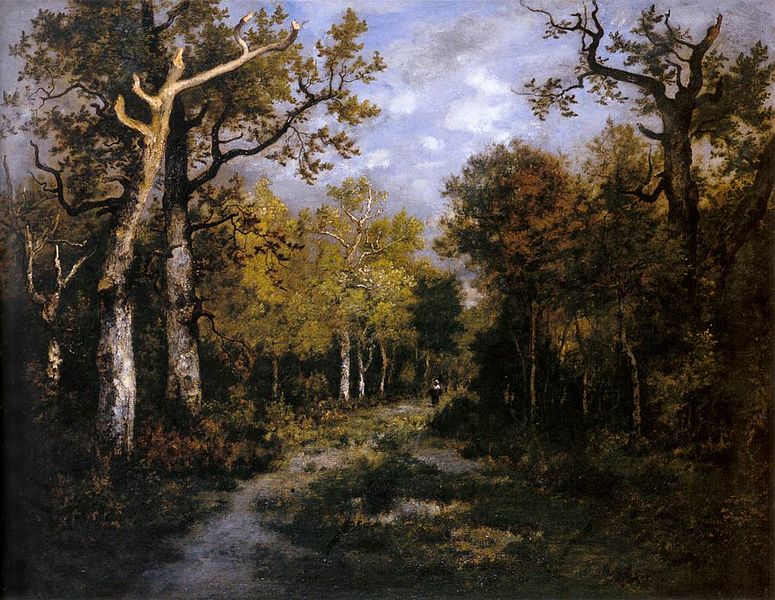
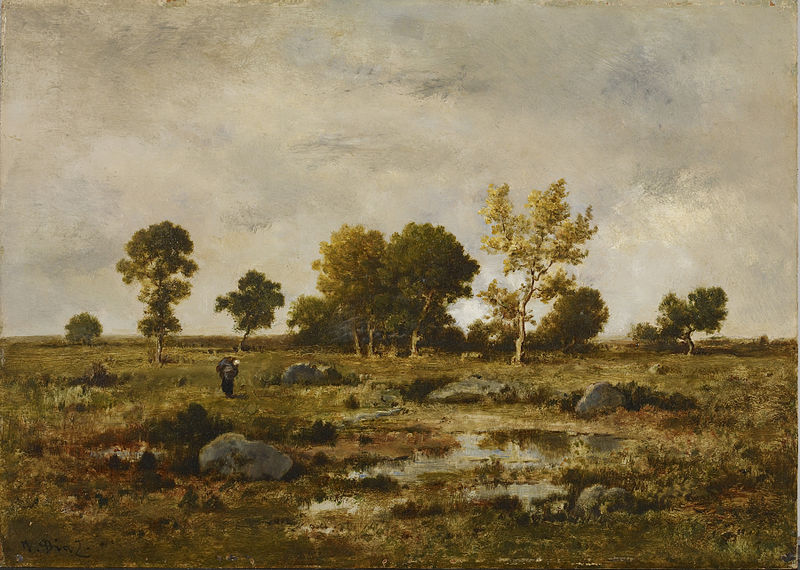
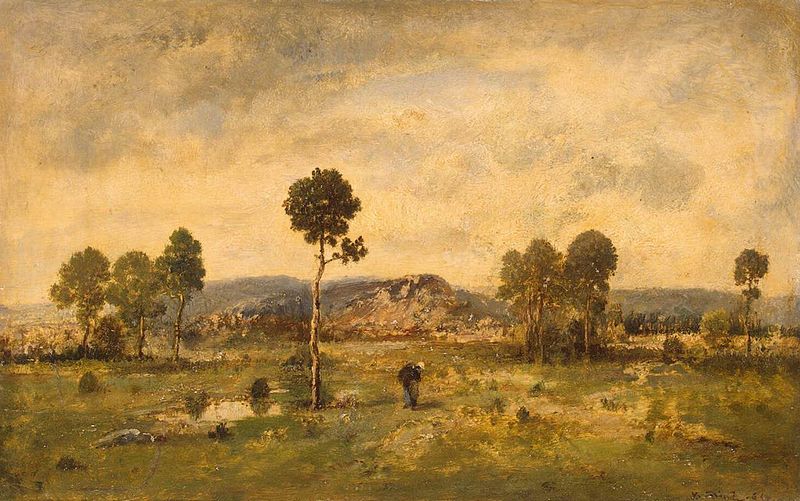
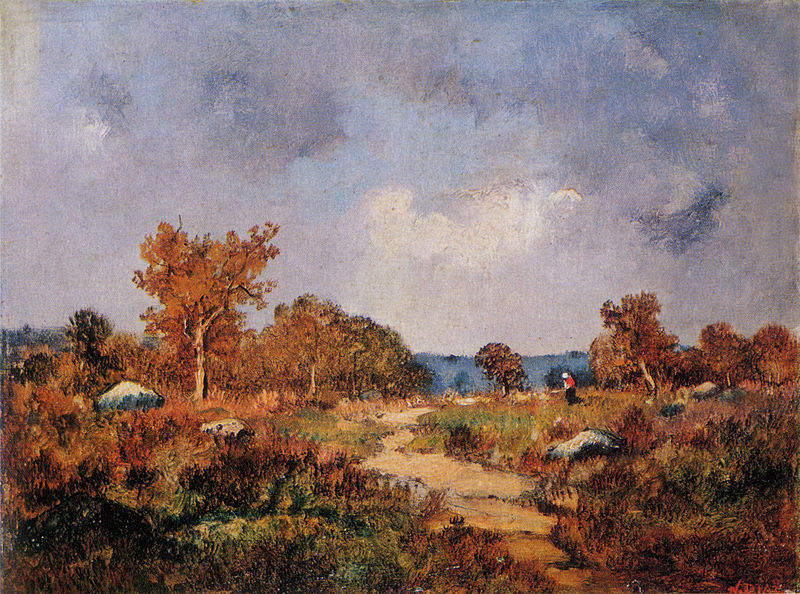
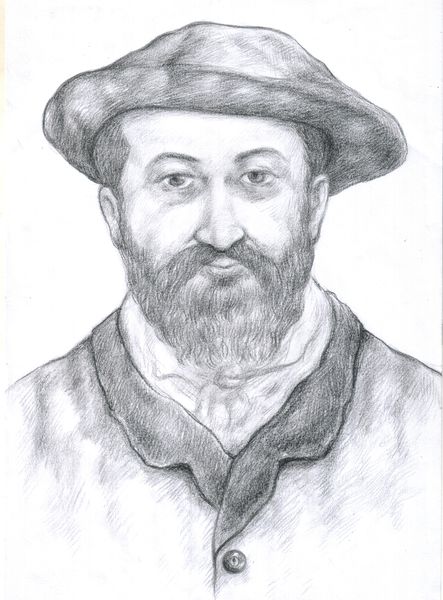
Pierre Emmanuel Damoye was a French artist born in Paris on February 20, 1847. He studied his craft at the École des Beaux - Arts and went on to become a renown and influential landscape artist noted for his sweeping skies, tree studded plains, and vibrant farmlands. He was regularly recognized by a broad range of art critics as one of the most significant heirs to the Barbizon school tradition.
Damoye studied at the École des Beaux - Arts in the studio of Léon Bonnat, one of the foremost figure painters and portraitists of the late nineteenth century. Damoye, however, seems to have committed himself to landscape art from the beginning of his career. His earliest dated works from the late 1860s also clearly reveal the influence of both Jean - Baptiste - Camille Corot and Charles - François Daubigny, from whom he acquired both a brighter range of colors and a looser, more ‘impressionist’ brush style. And, although he was cognizant of the example of Corot and Daubigny, he built his repertoire of compositions and favored sites quite independently of the two ‘old masters’ of river landscape, thus developing a very personalized color scheme.
He is also one of the principal artists associated with the ‘school of Pontoise’, a group of young landscapists who painted primarily along the riverbanks of the Seine and Oise Rivers, north of Paris, often establishing homes in Pontoise. He also painted the river banks and upland plateaus of the Oise and Seine basins, worked frequently in Picardy and throughout the great Loire valley. He also made at least one trip to the Normandy coast.
Damoye began to exhibit at the Salon of 1875 with a landscape titled L’hiver, and by 1879 he had won his first medal, a bronze or third class honor, beginning an unusually rapid rise for a landscape painter. In 1884 he received a second class medal, followed by a very prestigious gold medal at the grand, centennial Exposition Universelle of 1889. He was inducted into the Légion d'honneur in 1893 and became a member of the Salon jury in 1900. Despite such official recognition, however, Damoye was instrumental in forming the break away Société Nationale des Beaux - Arts, a rival exhibition association, and he continued to be associated with the ‘Salon du Champ - de - Mars’ until his death in 1916.
Pierre Emmanuel Damoye died in 1916 and is buried in the famous Père Lachaise Cemetery in Paris, along with Frédéric Chopin, Marcel Marceau, Molière, Jim Morrison, Marcel Proust, Gertrude Stein, as well as fellow artists Eugène Delacroix, Max Ernst, Camille Pissarro, Jean - Baptiste - Camille Corot, Jacques - Louis David, Georges - Pierre Seurat.
Damoye's works can be seen in the Musée du Louvre, Paris; Musée d'Orsay, Paris; Musée des Beaux - Arts, Bordeaux; Musée des Beaux - Arts, Troyes, France; and the National Museum of Art, Bucharest, Romania; Ateneum Art Museum, Helsinki. Given his skill and status among 19th Century artists, his works have also been highly sought by private collectors, resulting in an impressive record of successful auction transactions, including Christie's (New York, $30,000), Osenat (Paris, $11,470), Sotheby's (New York, $10,800), Beaussant Lefevre (Paris, $10,230), among others.
